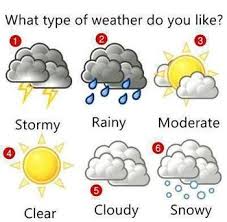 |
| CC BY - NC 2.0 |
Os pongo Phrasal verbs para que vayáis leyendo. No os preocupéis que al final uno se acostumbra a ellos.
Enjoy them!!
El blog de idiomas.es. (2014). 150 Phrasal Verbs con traducción y ejemplos. Recuperado de http://elblogdeidiomas.es/150-phrasalverbs-traduccion-ejemplo/
1. Get on
Subir/montarse
The bus was full.We couldn’t get on.
El autobús estaba completo, no pudimos subirnos.
2. Drive off
Marcharse (en un vehículo) de algún lugar
A woman got into the car and drove off.
Una mujer se subió al coche y se marchó.
3. Come back
Volver a algún lugar.
Sally is leaving tomorrow and coming back on Saturday.
Sally se va mañana y vuelve el sábado.
3. Turn round
Cambiar de dirección, girarse
When I touched him on the shoulder,he turned round.
Cuando le toqué en el hombro, él se giró.
4. Break down
Dejar de funcionar , dejar de operar. (romperse)
Sorry I’m late.The car broke down.
Siento llegar tarde. El coche dejó de funcionar (se rompió)
5. Look out
Ser cuidadoso, estar atento, permanecer atento.
Look out!There’s a car coming
Presta atención!, Viene un coche.
6.Take off
Despegar
It was my first flight.I was nervous as the plane took off.
Fué mi primer vuelo. Estaba nervioso hasta que el avión despegó.
7. Get on
Ponerse, Llevarse (bien/mal) con alguien, llevar algo (¿cómo lo llevas? how do you get it on?)
How was the exam?how did you get on?
¿Qué tal el examen? ¿Cómo te fué?
8. Get by
Apañárselas
My french isn’t very good, but it’s enough to get by.
My francés no es muy bueno, pero es suficiente para apañármelas.
9. Run away (from)
Escaparse, huir, alejarse.
Why did you run away from me?
¿Por qué huiste de mí?
10. Keep up (with)
Llevar el ritmo
You’re walking too fast. I can’t keep up with you.
Estás andando muy rápido. No puedo llevar tu ritmo









